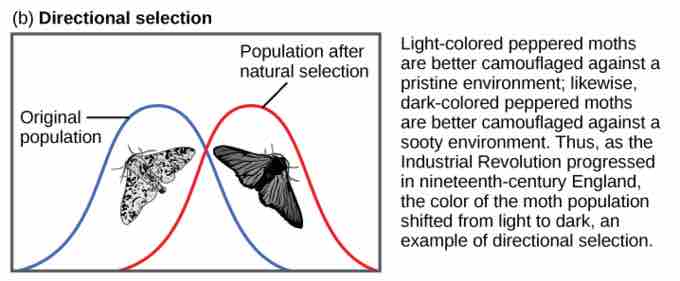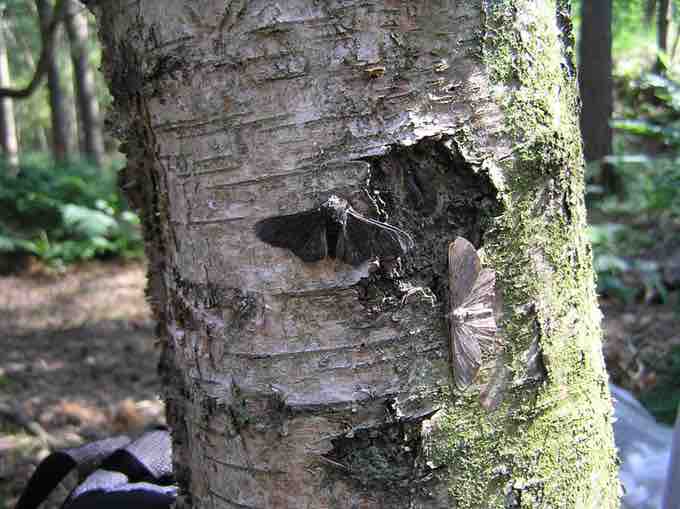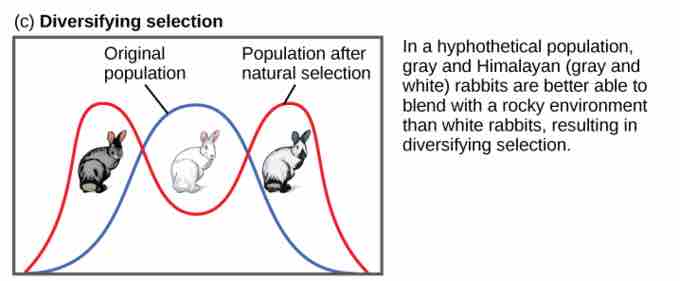Stabilizing Selection
If natural selection favors an average phenotype by selecting against extreme variation, the population will undergo stabilizing selection. For example, in a population of mice that live in the woods, natural selection will tend to favor individuals that best blend in with the forest floor and are less likely to be spotted by predators. Assuming the ground is a fairly consistent shade of brown, those mice whose fur is most-closely matched to that color will most probably survive and reproduce, passing on their genes for their brown coat. Mice that carry alleles that make them slightly lighter or slightly darker will stand out against the ground and will more probably die from predation. As a result of this stabilizing selection, the population's genetic variance will decrease.

Stabilizing selection
Stabilizing selection occurs when the population stabilizes on a particular trait value and genetic diversity decreases.
Directional Selection
When the environment changes, populations will often undergo directional selection, which selects for phenotypes at one end of the spectrum of existing variation.
A classic example of this type of selection is the evolution of the peppered moth in eighteenth- and nineteenth-century England. Prior to the Industrial Revolution, the moths were predominately light in color, which allowed them to blend in with the light-colored trees and lichens in their environment. As soot began spewing from factories, the trees darkened and the light-colored moths became easier for predatory birds to spot.

Directional selection
Directional selection occurs when a single phenotype is favored, causing the allele frequency to continuously shift in one direction.
Over time, the frequency of the melanic form of the moth increased because their darker coloration provided camouflage against the sooty tree; they had a higher survival rate in habitats affected by air pollution. Similarly, the hypothetical mouse population may evolve to take on a different coloration if their forest floor habitat changed. The result of this type of selection is a shift in the population's genetic variance toward the new, fit phenotype.

The Evolution of the Peppered Moth
Typica and carbonaria morphs resting on the same tree.The light-colored typica (below the bark's scar) is nearly invisible on this pollution-free tree, camouflaging it from predators.
Diversifying (or Disruptive) Selection
Sometimes natural selection can select for two or more distinct phenotypes that each have their advantages. In these cases, the intermediate phenotypes are often less fit than their extreme counterparts. Known as diversifying or disruptive selection, this is seen in many populations of animals that have multiple male mating strategies, such as lobsters. Large, dominant alpha males obtain mates by brute force, while small males can sneak in for furtive copulations with the females in an alpha male's territory. In this case, both the alpha males and the "sneaking" males will be selected for, but medium-sized males, which cannot overtake the alpha males and are too big to sneak copulations, are selected against.

Diversifying (or disruptive) selection
Diversifying selection occurs when extreme values for a trait are favored over the intermediate values.This type of selection often drives speciation.
Diversifying selection can also occur when environmental changes favor individuals on either end of the phenotypic spectrum. Imagine a population of mice living at the beach where there is light-colored sand interspersed with patches of tall grass. In this scenario, light-colored mice that blend in with the sand would be favored, as well as dark-colored mice that can hide in the grass. Medium-colored mice, on the other hand, would not blend in with either the grass or the sand and, thus, would more probably be eaten by predators. The result of this type of selection is increased genetic variance as the population becomes more diverse.
Comparing Types of Natural Selection

Types of natural selection
Different types of natural selection can impact the distribution of phenotypes within a population.In (a) stabilizing selection, an average phenotype is favored.In (b) directional selection, a change in the environment shifts the spectrum of phenotypes observed.In (c) diversifying selection, two or more extreme phenotypes are selected for, while the average phenotype is selected against.